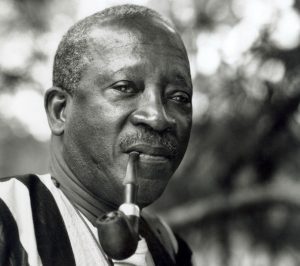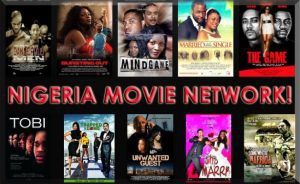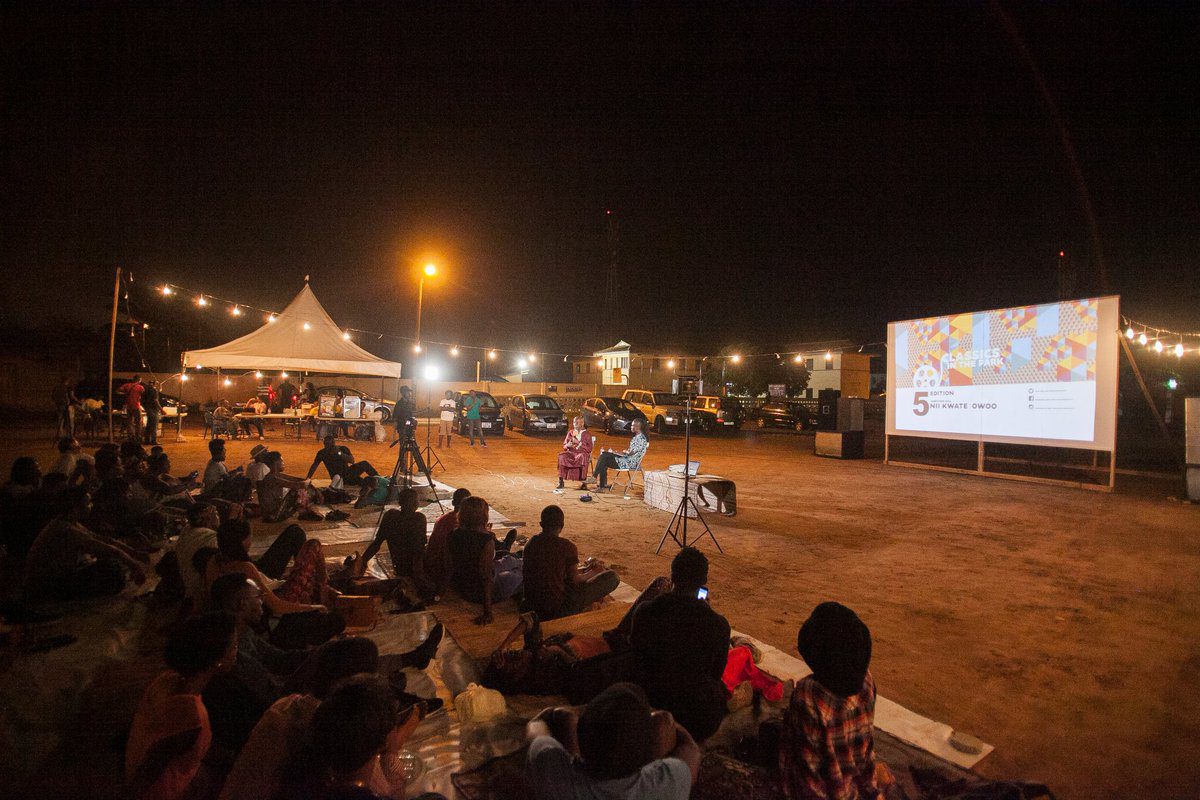From early experiments in making films which mimetically represented European and even American cinema, African directors evolved – as time wore on – into sensitive filmmakers telling local stories of violence, war and genocide on the silver screen. Anglo-European depictions of African life were overtly racist which not only lacked empathy for the colonised but also blamed them for their misery and wretched conditions. However, by the turn of the twentieth century, Africa was making films involving local themes but which had a global and universal appeal. Filmmakers interrogated a variety of issues ranging from environmentalism, political, social and economic injustices to those arising from the democratisation of African societies, opines Prof. Lalit, in an erudite research. A Different Truths exclusive.
 The seeds of modern African cinema were sown during the age of brutal colonial violence marked by the decimation of large concentrations of local populations and their cultures. Thus, early African filmmakers struggled to create a cinema in an environment marked by political repression, on the one hand, and anti-colonial revolutionary struggles. From early experiments in making films which mimetically represented European and even American cinema, African directors evolved – as time wore on – into sensitive filmmakers telling local stories of violence, war and genocide on the silver screen. Anglo-European depictions of African life were overtly racist which not only lacked empathy for the colonised but also blamed them for their misery and wretched conditions. However, by the turn of the twentieth century, Africa was making films involving local themes but which had a global and universal appeal. Filmmakers interrogated a variety of issues ranging from environmentalism, political, social and economic injustices to those arising from the democratisation of African societies.
The seeds of modern African cinema were sown during the age of brutal colonial violence marked by the decimation of large concentrations of local populations and their cultures. Thus, early African filmmakers struggled to create a cinema in an environment marked by political repression, on the one hand, and anti-colonial revolutionary struggles. From early experiments in making films which mimetically represented European and even American cinema, African directors evolved – as time wore on – into sensitive filmmakers telling local stories of violence, war and genocide on the silver screen. Anglo-European depictions of African life were overtly racist which not only lacked empathy for the colonised but also blamed them for their misery and wretched conditions. However, by the turn of the twentieth century, Africa was making films involving local themes but which had a global and universal appeal. Filmmakers interrogated a variety of issues ranging from environmentalism, political, social and economic injustices to those arising from the democratisation of African societies.
Just as in many other parts of the colonised world, Lumiere films made their first appearance in Africa, in 1896, where they were screened in theatres in Cairo and Alexandria.
Just as in many other parts of the colonised world, Lumiere films made their first appearance in Africa, in 1896, where they were screened in theatres in Cairo and Alexandria. Later, agents carried the short productions of Lumiere to cities such as Algiers and Oran. Short films generated much curiosity both among the audiences as well as local entrepreneurs and men of capital. One of these was Albert Samama Chikly, who became one of the pioneers to direct the first Tunisian film Zohra (1922) in Arabic. Meanwhile, French filmmakers began to enter Egypt in significant numbers and began to shoot in different parts of the colony. This prompted an Egyptian Mohammad Bayouni to make a short film Al bash kateb in 1922. With the success of the film, Egypt almost immediately emerged as the unrivalled centre for film production in Africa. Between1922-26, Egypt produced thirteen silent films. A year later, Wadad Orfi directed Laila which earned the appellation of being Egypt’s first national film. Another turning point was the arrival of sound in the 1930s. Arab filmmakers and their Italian counterparts made films in diverse genres (Anshudat al-fuad, Wedad, etc.) Indeed film production in Egypt generated so much interest that from 1935 onwards, Egypt’s premier bank- the Bank Misr – began to fund film companies. African cinema thus became synonymous with Egyptian cinema.
…the initial fervor for film production began to wane as the Second World War broke out disrupting supplies both of raw stock and technical equipment.
However, the initial fervor for film production began to wane as the Second World War broke out disrupting supplies both of raw stock and technical equipment. Filmmaking in Egypt revived only after the British forces completely withdrew from the country, in 1956. It was in this period that highly acclaimed films such as Abdel Jabar Wali’s Man al-masoud (1956) and Kameran Hassani’s Said Effendi (1958) were released. Likewise, other well-known post-independent directors who drew immediate attention were the neo-realist filmmaker Salah Abou Seif (Bidaya wa Nihaya, 1960), Youssef Chahini (Saladin, 1963, Awdat al-ibn, 1976 and Iskandariya leeh, 1978) who was he master of social dramas and Tewfik Saleh who made political films (Al-mutamarridum, 1966 and Al-Makhdu‘un (1972). The Egyptian government nationalized the film industry in 1961-a measure which brought short-term benefits to some filmmakers but resulted in ultimate disaster, until the policy was finally reversed in 1974.
Another major geographical precinct of the African film industry was what is known as sub-Sahara. As far as film production is concerned, sub-Sahara can be divided into Francophone (French speaking) and Anglophone (English speaking) countries. However, it may be argued that in most sub-Saharan countries, colonial rule inaugurated Bantu cinema – a form that essentially ridiculed and even demonized African cultures, while trying to valorize western values and institutions. This situation was eventually reversed as more and more local entrepreneurs began to display interest in film production.
In 1954, a young filmmaker from the French-speaking Senegal- Paulin Soumano – took halting steps to break this ideological stranglehold by shooting his debut film C’ eˊtait il ya quatre ans and in the following year another path breaking film –Afrique-Sur-Saine.
From the 60s up until the 90s, the French Ministry of Cooperation remained very active in the production, distribution and exhibition of African cinema in French…
However, film scholars are unanimous in pronouncing the novelist turned filmmaker Sembene Ousmane as the ‘Father of African cinema’ and who began his career by making disturbingly political films such as Borrom Saret (1963) and La Noire de(1966). Incidentally, both the films won awards in international film festivals. Sembene made films in French but soon turned to writing dialogues in local languages such as Wolof and Diola. Sembene’s contemporary Djibril Diop Mambety – poet, composer and actor, adopted a non-linear style of storytelling and stunned his audiences by making political films such asContras’ City (1968) Badou Boy (1970) and Parons Grand Meˊre. Around the same time, Sembene’s contemporary Mahama Johnson Traoreˊ won laurels for his films like Dieuge-bi (1969), Diankha-bi (1969) and L’ Enfer des innocent (1970). Founder of the Pan African Film Festival FESPACO, Traoreˊ also edited the film periodical Cahiers d’ Afrique. Alongside Senegal, small and medium-sized film industries developed in other former French colonies like Burkina Faso, Niger, Cameroon, Upper Volta, Mali, Tunisia, Algeria and Tunisia. From the 60s up until the 90s, the French Ministry of Cooperation remained very active in the production, distribution and exhibition of African cinema in French insofar as it also made French studios available for African directors to complete post-production work.
career by making disturbingly political films such as Borrom Saret (1963) and La Noire de(1966). Incidentally, both the films won awards in international film festivals. Sembene made films in French but soon turned to writing dialogues in local languages such as Wolof and Diola. Sembene’s contemporary Djibril Diop Mambety – poet, composer and actor, adopted a non-linear style of storytelling and stunned his audiences by making political films such asContras’ City (1968) Badou Boy (1970) and Parons Grand Meˊre. Around the same time, Sembene’s contemporary Mahama Johnson Traoreˊ won laurels for his films like Dieuge-bi (1969), Diankha-bi (1969) and L’ Enfer des innocent (1970). Founder of the Pan African Film Festival FESPACO, Traoreˊ also edited the film periodical Cahiers d’ Afrique. Alongside Senegal, small and medium-sized film industries developed in other former French colonies like Burkina Faso, Niger, Cameroon, Upper Volta, Mali, Tunisia, Algeria and Tunisia. From the 60s up until the 90s, the French Ministry of Cooperation remained very active in the production, distribution and exhibition of African cinema in French insofar as it also made French studios available for African directors to complete post-production work.
In the English-speaking countries of Africa, Ghana and Nigeria have taken the lead. Paradoxically, the Bantu film project provided Ghana with an infrastructure which remained unrivalled in the rest of Africa. Early films from Ghana were Orientalist projects that depicted traditions of witchcraft and sorcery. Later, two different genres came into existence – Kumawood (low budget comedies in Twi language made by amateurs) and Ghallywood (high budget films in English made by professionals). Some of the more illustrious directors of the Ghanaian film industry included Ernest Kofi Abbequayes, Kwa Ansah, William Akuffos, Samuel Nais, Sam Fiscians and Harry Lauds. Many Ghanaian directors later migrated to Nigeria, which became the biggest centre (Nollywood) for film production in Africa. In other regions of Anglophone Africa Haile Gerima (Ethiopia), Olai Balogun (Nigeria), Soa Gamba (Kenya), Abdul Kader Said (Somalia) and Anant Singh (South Africa).
Today, the Nigerian film industry is the most robust among all African nations, producing 1000-1500 films annually. This is more than the turnover of the American film industry
Today, the Nigerian film industry is the most robust among all African nations, producing 1000-1500 films annually. This is more than the turnover of the American  film industry and slightly lesser than what the Indian film industry achieves on an annual basis. Derided for their unsophisticated narratives and poor use of the camera, Nigerian films lately have attracted global attention for their affective modes of storytelling and creative use of film technology. These include films like Tango with Me (2010) and Phone Swap (2012). Finally, Nigerian films have gained more popularity because of its expanding diaspora.
film industry and slightly lesser than what the Indian film industry achieves on an annual basis. Derided for their unsophisticated narratives and poor use of the camera, Nigerian films lately have attracted global attention for their affective modes of storytelling and creative use of film technology. These include films like Tango with Me (2010) and Phone Swap (2012). Finally, Nigerian films have gained more popularity because of its expanding diaspora.
However, many problems facing African cinema remained largely unresolved. In addition to poor funding and inferior technology, the settings for film exhibition in Africa were not conducive. Thus, while American cinema audiences could watch films in relatively peaceful locations, African films were often screened in an environment characterised by fear, violence, corruption and poverty. Many African directors who initially imitated the Hollywood style of filmmaking eventually gravitated towards a more realist mode of telling, perhaps as a strategy to reverse and desacralize the colonial gaze. There were some who experimented with linear narratives interspersed with circularity and the recurrent use of mythology and other folkloric strategies (Ceddo, 1976, Kuuni, 1982, Yeelan, 1987, Tilai, 1990). Films made in the Kumawood genre deserve a special mention. Not only does Kumawood deploy the local language, thus challenging the hegemony of American cinema, but also cleverly woven into the narrative are, critiques of the vestiges of colonialism and injustices of Africa’s precolonial pasts. Kumawood films, therefore, have an outreach beyond Ghana-the land of their origin. Further, more and more African cinema is now being screened in Film Festivals outside Africa. Thus worldwide audiences can see more African films today than they could a decade earlier. This notwithstanding, the American film is gradually eating into the vitals of the African film industry by flooding the continent with slapstick, romantic and thriller films. If the experience of Latin America is a pointer, African filmmakers will have to design newer and effective strategies to meet the challenges posed by an aggressive and hegemonic American film industry.
Photos from the Internet






 By
By
 By
By
Thank you for sharing the history and information regarding African cinema. Good to know that directors are not imitating Hollywood and approached realistic, mythology and folkloric narratives.
Regards